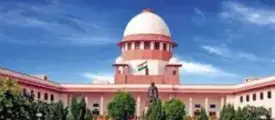Pirates Beware! Government tightens noose with Cinematograph (Amendment) Bill, 2023

By Pallavi Paul and Deepika Shrivastav
The Lok Sabha passed the Cinematograph (amendment) Bill, 2023 on July 31, 2023 after the Bill was approved by the Rajya Sabha on July 27, 2023. The last amendment to the Cinematograph Act, 1952 was made in the year 1984, almost 40 years ago. [1]
The Bill attempts to reconcile the growing disconcert in the film industry and focuses over the key issue of piracy while also spotlighting over other matters of concern like certification of films and revisional powers of the Central Government.
The main objective and purpose of the Cinematograph (amendment) Bill, 2023 is to fight piracy and promote the film industry. The Bill focuses on (i) the issue of unauthorized recording and exhibition of films and curb the threat of piracy by transmission of unauthorized copies on the Internet; (ii) the issue of improving the categorization of certification of films and the procedure for certification of films for public exhibition by the CBFC (Central Board of Film Certification) and; (iii) harmonizing the law with extant executive orders, judicial decisions and other relevant legislations.
Prohibition of unauthorized recording and exhibition of films:
The Bill has included new sections 6AA and 6AB relating to ‘Prohibition of unauthorized recording’ and ‘Prohibition of unauthorized exhibitions of films’ respectively.
Section 6AA. No person shall use any audio-visual recording device in a place licensed to exhibit films with the intention of making or transmitting or attempting to make or transmit or abetting the making or transmission of an infringing copy of such film or a part thereof. [2]
Section 6AB. No person shall use or abet the use of an infringing copy of any film to exhibit to the public for profit—
- at a place of exhibition which has not been licensed under this Act or the rules made thereunder; or
- in a manner that amounts to the infringement of copyright under the provisions of the Copyright Act, 1957 or any other law for the time being in force.’
The inclusion of the above-mentioned sections has raised the benchmark for assessing and attributing liability for piracy.
Retributive Actions
Any person found to be engaged in the offenses laid down under Sections 6AA and 6AB shall be punishable with imprisonment for a term period of anywhere between three months to three years and a fine ranging from three lakh rupees to five percent of the audited gross production cost of the film
Interplay Between the Amendment Bill, Copyright Law and Information Technology Act
Section 7(1B): Notwithstanding anything contained in this section—
- a person aggrieved by a contravention under Section 6AA or Section 6AB shall not be prevented from taking suitable action for an infringement under Section 51 of the Copyright Act, 1957 or from taking suitable action for computer related offences under section 66 of the Information Technology Act, 2000 or any other relevant laws for the time being in force;
- the appropriate Government or its agencies shall not be prevented from taking suitable action against an intermediary as defined under clause (w) of sub-section (1) of section 2 of the Information Technology Act, 2000, where such intermediary acts in the manner as set out under sub-section (3) of section 79 of the said Act or any other law for the time being in force.
Further, the Cinematograph Bill, 2023 takes into cognizance offenses being carried out on the digital medium and allows the aggrieved party to take action for computer-related offenses covered under Section 66, Information Technology Act, 2000[3] or any other relevant laws currently in force, in addition to an action for copyright infringement. Further, unlike its predecessors, the Bill empowers Government agencies to take action against intermediaries engaged in abetment of piracy.
Other pertinent amendments made under the Cinematograph (amendment) Bill, 2023 are:
Age Based Categorization: The existing age-based certification in the ‘UA’ category (i.e. without restriction, but subject to the guidance of parents or guardians for below 12 children) has been sub-divided into three age-based categories i.e., UA 7+ (seven years), UA 13+ (thirteen years), UA 16+ (sixteen years).
Perpetual validity of certificates: The restriction of 10 years validity of a certificate granted by the Central Board of Film Certification has been increased to perpetuity, which means certificate granted by the CBFC are valid for lifetime.
Re-certification of films for television/other media: The Bill empowers the Central Board of Film Certification to provide separate certificates for a film’s exhibition on television or other media and can further direct the concerned party to carry out necessary modifications in the film before sanctioning the film for public exhibition.
The films with ‘A’ certification (films available for public exhibition but with restrictions to adults aged 18+) and ‘S’ certification (films which certain members of the society such as doctors and scientists are permitted to watch) will require a separate certificate for exhibition on television, or any other media prescribed by the Central Government.
Alignment with Hon’ble Supreme Court judgments: The Bill omits the revisional powers of the Central Government over the CBFC’s decisions based on the judgment of the Hon’ble Supreme Court in the case of Union of India vs. K.M. Shankarappa.
K.M Shankarappa by way of writ petition had challenged the constitutional validity of certain sections of the Cinematograph Act, 1952 wherein some portions of Section 6(1) of the Act relating to revisional powers of the Central Government had been held unconstitutional.
Salient changes are tabulated below:
| Salient features | Sections | The Cinematograph Act, 1952 | The Cinematograph (Amendment) Bill, 2023 |
|---|---|---|---|
| Unauthorised recording and exhibition to be punishable | Insertion of new sections 6AA and 6AB | Prohibits acts of use of copyrighted content without owner’s authorisation. | In additon to prohibiting direct acts of piracy, the Bill also prohibits abetment of acts of piracy.Exemptions under the Copyright Act 1957 will also apply to the above offences.
Additionally, computer related offenses have also been held to be actionable. |
| Sanctions | Amendment of Section 7 of the Cinematograph Act, 1952 | Imprisonment for a term which may extend to 3 years and/or a fine till 1 lakh rupees | Imprisonment between 3 months and 3 years, and a fine between 3 lakh rupees and 5% of the audited gross production cost. |
| Additional Age-Certification | Substitution of Section 4 of the Cinematograph Act, 1952 | Films were broadly categorized under the following:
‘U’: without restriction; |
Further bifurcation of certificate categories based on age.
UA category substitued with the following three categories to also indicate age-appropriateness: |
| Validity of Certifications | Amendment of Section 5A (3) of the Cinematograph Act, 1952 | Ten years | In perpetuity |
| Revisional powers of the central government | Omission of Section 6(1) of the Cinematograph Act, 1952 | Empowers the central government to examine and make orders in relation to films that have been certified or are pending certification. | Removes this power of the central government in line with the Union of India vs. K.M. Shankarappa judgement. |
CONCLUDING THOUGHTS
With easy access to the Internet and the availability of smartphones, the menace of piracy is indeed on the rise and has had a huge impact on the film industry. The film industry is purported to be grappling with losses to the tune of 20,000 crores annually on account of the piracy of films. The negative impact of piracy does not end at monetary losses and also leads to loss of intangible assets, such as, intellectual property.
As the new Bill envisages greater punitive measures, it remains to be seen whether the same will indeed have the desired deterrent effect on piracy and is able to assuage the concerns of all stakeholders involved.
As regards the issue concerning further classification of age based certification, such legislative moves are likely be taken with a pinch of salt as the same may be perceived as a political move to exercise control over viewers’ choices.
Lastly, the Bill does not offer any clarity on whether the provisions extend to control of content on OTT platforms or not and leaves much to be desired in that respect.
[1] https://pib.gov.in/PressReleaseIframePage.aspx?PRID=1944435
[2] https://prsindia.org/files/bills_acts/bills_parliament/2023/Cinematography_Bill_2023.pdf
[3] https://www.indiacode.nic.in/bitstream/123456789/13116/1/it_act_2000_updated.pdf
Related Posts
Copyright infringement in case of cinematographs -Analysis of MRF Limited. vs Metro Tyres Limited
What is the cost of filing a copyright in a Cinematograph Film in India?
Patent Act needs to be Re-Examined- says Delhi High Court

By Sakshi Bhatia and Johny Solomon Raj
The Delhi High Court has recently observed that there is a need to re-look Section 3(k) of the Indian Patent Act, 1970, as a large number of inventions in evolving technologies including by SMEs, start-ups and educational institutions could be in the field of business methods or application of computing and digital technologies. Section 3(k) of the Indian Patents Act excludes patentability of inventions relating to mathematical or business methods or computer program per se or algorithms.
For their observation, the court referred to the One Hundred and Sixty-First Report of the “Review of the Intellectual Property Rights Regime in India” presented by the parliamentary standing committee which records as under:
• Presently, the Indian Patents Act, 1970 as well as the Copyright Act, 1957 are not well equipped to facilitate inventorship, authorship and ownership by Artificial Intelligence. As per Section 3(k) of the Indian Patent Act, 1970, a mathematical or a business method or a computer programme or algorithms run by Artificial Intelligence are not patentable. Further, the condition to have a human inventor for innovating computer related inventions (innovations by AI and machine learning) hinders the patenting of AI induced innovations in India. Therefore, there is a need to review the provisions of both the legislations on a priority basis.
• During the deliberations with relevant stakeholders, the Committee was informed that the protection of both AI-generated works and AI solutions should be permitted under patent laws of India as it would incentivize innovation and R&D thereby significantly contributing to creativity and economic growth of the country. It was informed that rendering protection to works generated by AI either autonomously or with the assistance and inputs of a human being would incentivize and encourage the creator of the AI which in turn would further encourage creativity and development of more AI solutions.
• The Committee noted that the relevance and utility of cutting edge technologies such as Artificial Intelligence (AI) and machine learning would increase manifold in the present world especially in the times of Covid-19 pandemic wherein the digital applications are playing a crucial role in responding to the crisis. Moreover, the huge benefits of AI and its applications in India’s revenue generation and economy as well as its impact on technological innovation necessitate its expansion in a secured manner. In view of this, the Committee recommended that a separate category of rights for AI and AI related inventions and solutions should be created for their protection as IPRs. It further recommended that the Department should make efforts in reviewing the existing legislations of The Patents Act, 1970 and Copyright Act, 1957 to incorporate the emerging technologies of AI and AI related inventions in their ambit.
• The Committee was informed that a framework needs to be developed for patenting of algorithms by associating their use to a tangible result. For example, under the AI guidelines of European Patent Office, abstract mathematical methods cannot be patented. However, it can be patented if the mathematical method involves the use of technical means or a device such as computers. Also, linking the mathematical applications and algorithms to practical application makes them a process which could be patented as being practiced in US.
• The Committee recommended to the Department that the approach in linking the mathematical methods or algorithms to a tangible technical device or a practical application should be adopted in India for facilitating their patents as being done in E.U. and U.S. Hence, the conversion of mathematical methods and algorithms to a process in this way would make it easier to protect them as patents.”
Hon’ble Ms. Justice Prathiba M Singh took note of the above report and expressed concern that a large number of inventions may be excluded from patentability in view of Section 3(k).
Brief facts of the case in view of which the above concerns were expressed:
The court made the above observations while dismissing the appeal (https://indiankanoon.org/doc/154732222) moved by Open TV a USA based entity, challenging the order passed by Controller of Patents and Designs on May 31, 2021. The patent application 2564/DELNP/2012 was for a network architecture to enable the exchange of interactive media content distribution of any type of digital or tangible media. The application was therefore rejected by the Indian Patent Office on the ground that the scope of the patent fell within Section 3(k) of the Act and hence, was not patentable. Denying relief to the entity the court said that the exclusion in respect of business methods in section 3(k) is absolute and not restricted by the words ‘per se’ as in the case of computer programs. “In case of computer programs, the use of the phrase ‘per se’ in effect means that a program per se is not patentable but when the same exhibits a technical effect or an advancement, or a technical contribution, the invention could become patentable,” the court said.
Conclusion:
Although the court dismissed the above case without providing any relief to the entity, it made the above observation referring to One Hundred and Sixty First Report of the “Review of the Intellectual Property Rights Regime in India”. In view of the observations, the court directed the Registry to send copy of the present order to the Secretary, Department for Promotion of Industry and Internal Trade (DPIIT), Ministry of Commerce and Industry for necessary consideration.
Related Posts
Ground for rejection of Patent divisional application: Section 16 Controversy
Cabinet sanctions Amendments for introducing 28% GST on online gaming

By Apalka Bareja and Isha Sharma
Background
Pursuant to the recommendation of the 50th GST Council Meeting held on July 11, 2023 concerning the imposition of consistent 28% GST rate on all actionable claims supplied in casinos, horse racing and online gaming on full face value, irrespective of whether the activities are a game of skill or game of chance, the 51st GST Council Meeting was conducted on August 02, 2023 to propose modifications in the CGST Act and IGST Act, 2017 respectively, to clarify government’s instance on taxation of online gaming sectors.
The Council also recommended to propose a specific provision in the IGST Act, 2017 to provide for liability to pay GST on the supply of online money gaming by a supplier located outside India to a person in India, for single registration in India for the said supplier through a simplified registration scheme.
It was also held that the valuation of the supply of online gaming and actionable claims in casinos is to be done based on the amount paid/payable to/deposited with the supplier by or on behalf of the player and not on the total value of each bet placed.
It was also decided by the Council that efforts will be made to complete the legislative process of making amendments in the Act within a period of two months.
Amendments in the IGST and CGST Act, 2017
On August 11, 2023, the Central Goods and Service Tax Act (Amendment) Bill, 2023 and Integrated Goods and Service Tax (Amendment) Bill, 2023 proposing modifications to the IGST and CGST Acts, 2017 respectively were introduced in the House of Parliament and the same has been passed by the Lok Sabha permitting the incorporation of 28% good and service tax on activities like horse racing, online gaming and casinos.
Salient Features of the Central Goods and Service Tax (Amendment) Bill, 2023
- Including the definition of “Online gaming”, “Online money gaming”, “Specified actionable claim” and “Virtual digital asset” have been suggested in Section 2 of the CGST Act
- Proposal to expand the scope of “Supplier” under Section 2 of the Act in order to identify the suppliers in case of supply of “Specified actionable claim”.
- Insertion of a new clause in Section 24 of the Act to provide for mandatory registration of the person for supplying online money gaming from a place outside India to a person in India.
Salient Features of the Integrated Goods and Service Tax (Amendment) Bill, 2023
- Exclusion of online money gaming from OIDAR services: The proposed amendment to the definition of Online Information and Data Access or Retrieval (“OIDAR”) services aiming to exclude online money gaming from falling within the scope of OIDAR services.
- Modification in taxation: By virtue of the proposed amendment to Section 5(1) of the Act, the government may potentially designate goods for which the IGST will be levied upon import, instead of custom duties under the Customs Act.
- Insertion of a new sub-clause: A new clause has been proposed to be inserted in Section 10(1) to establish the location of supply when goods are provided to unregistered person.
- Insertion of a new provision for supply of online money gaming services outside India: A new section 14A has been proposed to be inserted to provide for special provision for online money gaming supplied by a person located outside the taxable territory to a person located in India, including requirement of taking a single registration.
The aforementioned suggestions/recommendations shall become effective upon receiving approval from the President by assenting to the Bill.
Supreme Court Launches Handbook to Combat Gender Stereotypes

By Anuradha Gandhi and Rachita Thakur
Introduction
Charity begins at home!
The Chief Justice of India, Hon’ble Mr. Justice DY Chandrachud announced, in his initiative to bring about a progressive change in use of Gender Stereotypes, the launch of the Handbook on Combating Gender Stereotypes,’ Supreme Court of India (hereinafter referred to as the “Handbook”) on August 14, 2023 highlighting the fact that each case needs to be decided on merits and reliance on stereotypes, especially about women is liable to distort the law’s applicability in harmful ways.
What are Stereotypes?
A stereotype refers to a set idea that people have that people have about what someone or something is like, especially an idea that is wrong.[1] The most common forms of stereotypes that people are associate with are based on nationality, region, caste, gender, disability, sexuality, skin color, physical appearance, etc.
Stereotypes create bias in the minds of people that in turn inflicts harm on a particular person, a section of individuals or a community as a whole. For instance, the Code of Civil Procedure, 1908 earlier referred to people without financial means as ‘paupers’ which was observed to be demeaning to a community of individuals. Therefore, the term ‘pauper’ was subsequently substituted by ‘indigent’ to recognize the humanity of the class of people referred to by the term.
Stereotypes based on gendered roles
Society has ascribed specific gendered roles to individuals often classified as, men and women. The most common types of stereotypes that concern women are:
- Stereotypes based on inherent characteristics of women
- Stereotypes based on gendered roles of women
- Stereotypes related to sex, sexuality and sexual violence
Some of the stereotypes that the Handbook describes is as follows:
The Handbook further sheds emphasis on the certain stereotypical views against women that are often normalized along with the reality that is associated with them.
| Stereotype | Reality |
|---|---|
| All women want to have children | All women do not want to have children. Deciding to become a parent is an individual choice that every person takes based on a variety of circumstances. |
| Women should be submissive or subordinate to men. | The Constitution of India guarantees equal rights to individuals of all genders. Women are neither subordinate to men nor do they need to be submissive to anybody. |
| Dominant caste men do not want to engage in sexual relations with women from oppressed castes. Therefore, any allegation of sexual assault or rape by an oppressed caste woman against a dominant caste man is false. | Rape and sexual violence have long been used as a tool of social control. Dominant caste men have historically used sexual violence as a tool to reinforce and maintain caste hierarchies. |
| Men are unable to control their sexual desires. | Men, like all other humans, are in control of all their actions including their sexual desires. Such reasoning discounts the agency of men and then excuses this purported lack of agency. |
Apparently, these stereotypes have actually a ‘reality’ since majority of the cases that involved any kind of violence against women, especially sexual violence, have often mentioned about the stereotypical views against women. Reference to one of the case, Vishaka v. State of Rajasthan,[2] that led to enactment of the Prevention of Sexual Harassment of Women at Workplace (Prevention, Prohibition and Redressal) Act, 2013. The trial court acquitted the accused stating inter alia:
- A member of dominant caste would not rape a woman from an oppressed caste
- Older men aged 60-70 years cannot participate in gang rape
- It was improbable that a woman can be raped in the presence of her husband.
Aim of the Handbook
The Handbook on Gender Stereotypes aims at explaining what stereotypes are and help identify and avoid such stereotypes by:[3]
- identifying language that promotes gender stereotypes and offering alternative words and phrases; and
- identifying common reasoning patterns that are based on gender stereotypes (particularly about women) and discussing why they are incorrect
- highlighting binding decisions of the Supreme Court of India that have rejected these stereotypes and can be utilised by judges to dispel gender stereotypes.
The Handbook contains a list of preferred language to be used against the current use of stereotypical language. Some of the words that made their way to the list are mentioned below:
| Stereotype promoting language (INCORRECT) | Alternative language (PREFERRED) |
|---|---|
| Adulteress | Woman who has engaged in sexual relations outside of marriage |
| Bastard | Non-marital child or, a child whose parents were not married |
| Career woman | Woman |
| Concubine / keep | Woman with whom a man has had romantic or sexual relations outside of marriage |
| Easy virtue (e.g., a woman of easy virtue) | Woman |
| Eve teasing | Street sexual harassment |
| Faggot | Accurately describe the individual’s sexual orientation (e.g., homosexual or bisexual) |
| Fallen woman | Woman |
| Hooker | Sex worker |
| Housewife | Homemaker |
| Provider / Breadwinner | Employed or earning |
| Slut | Woman |
| Transsexual | Transgender |
| Transvestite | Cross-dresser |
| Unwed Mother | Mother |
| Violated (e.g., he violated her) | Sexually harassed / assaulted or raped |
| Whore | Woman |
The Principles of Judicial Doctrine
The Handbook also reiterates the judicial precedents that paved way for building progressive culture for women by eliminating harassment through active confrontation of patriarchal and stereotypical laws overtime.
- The role of law in confronting patriarchy and stereotypes in the case Joseph Shine V. Union of India,[4] wherein the constitution Bench of Supreme Court struck down the offence of ‘adultery’ under Section 497 of the Indian Penal Code, 1860;
- The Supreme Court in another case of State of Jharkhand v. Shailendra Kumar Rai,[5] reiterated its bar on the ban of “two-finger test” and termed it to be irrelevant for determination of rape since it violates the dignity of rape survivors or victims;
- The question of credibility of a survivor or a victim of sexual assault has been posed before the Apex Court a number of times, given that trial court usually refuse to accept the victim’s testimony due to certain perceived inconsistencies. The Supreme Court in State of Punjab v. Gurmit Singh,[6] has ruled against the presumption of not accepting the testimony of rape survivor and even directed the courts to not to display inherent suspicion on the incorrect assumption as a class of individuals lie about sexual violence;
- The Courts should not discredit the testimony of the victim merely because of the absence of physical injuries against the victim. Such situations should be evaluated contextually. The Supreme Court in State of Uttar Pradesh v. Chhotey Lal, [7] observed that it is wrong to assume that in all cases of intercourse with the women against will or without consent, there would be some injury on the external or internal parts of the victim;
- The courts should take into account the facts of the case and the social realities faced by the victim along with the respite of trauma from sexual violence. Therefore, mere delay in filing of FIR should not be treated as a ground to create a doubt on the credibility of complaint. The Supreme Court in a case, State of Punjab v. Gurmit Singh,[8] was faced with a contention where there was delay in filing of FIR and rejected the same.
Conclusion
The Handbook is launched with the perspective to aid and assist judges and raising awareness as to the need to avoid the use of stereotypes that belittle and objectify women in all aspects of life. Women, since ages have been facing numerous kinds of prejudiced beliefs and stereotypes that further reflects the injustice meted out to them.
The Handbook comes as a progressive step that focuses on stereotypes that concern women and not just women, theses stereotypes also impact individuals from across different genders and communities. Thus judges must be vigilant about these stereotypes while delivering a judgement and free from all kinds of conscious and subconscious biases.
[1] Handbook on Combating Gender Stereotypes, Supreme Court of India
[2] (1997) 6 SCC 241
[3] Handbook on Combating Gender Stereotypes, Supreme Court of India
[4] 2018:INSC:898
[5] 2022:INSC:1137
[6] (1996) 2 SCC 384
[7] (2011) 2 SCC 550
[8](1996) 2 SCC 384




